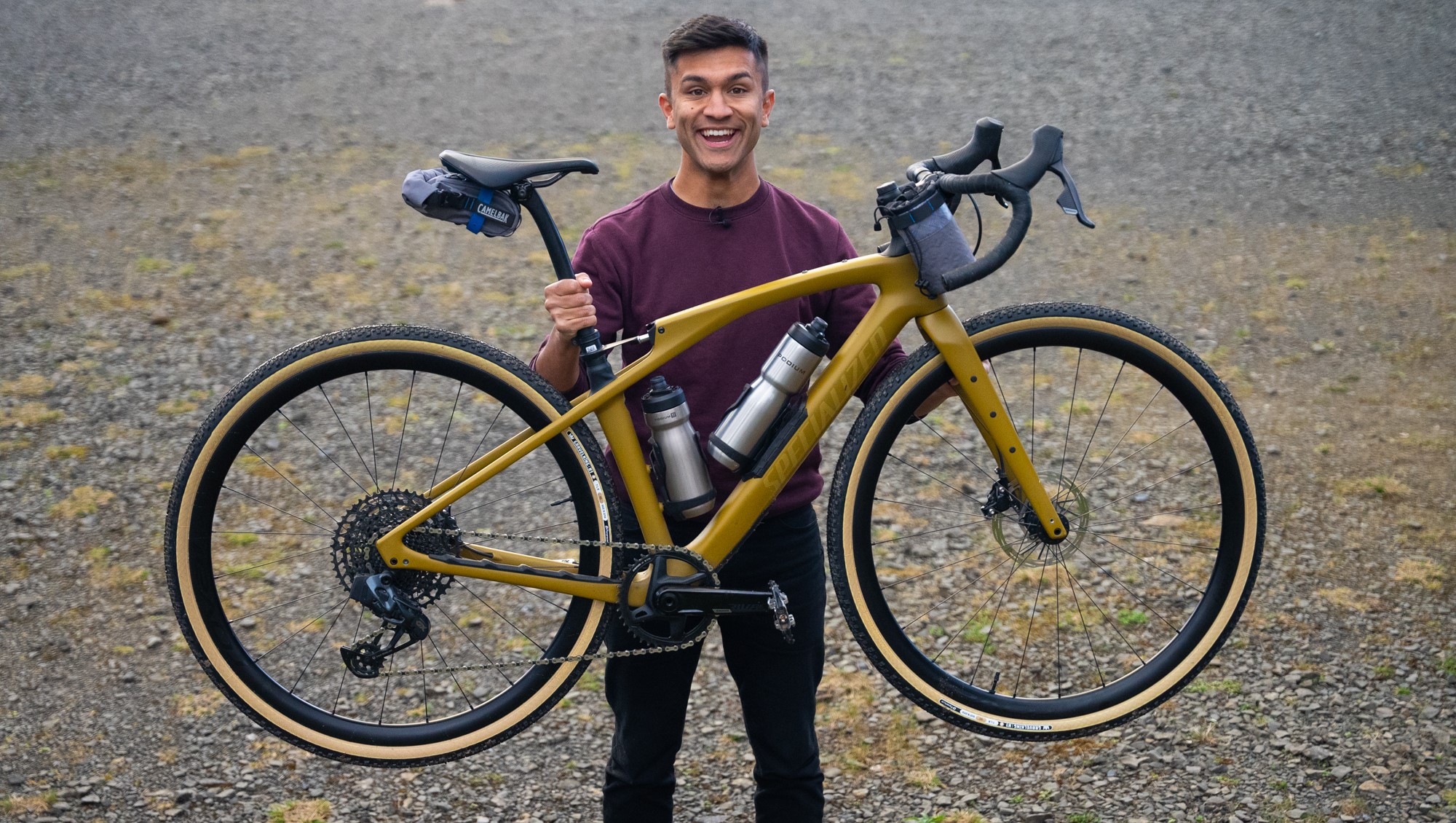How Camelbak’s bottle and pack range helped Sam survive the Dirty Reiver gravel race
If you’re taking on a longer ride, you’ll need the kit to carry the food and drinks to keep you fuelled

There are a lot of things to think about when preparing for your first gravel race: gearing, tyre choice, tyre pressure, clothing, spares. But arguably the most important thing to get right is your nutrition and hydration.
Gravel races are usually longer than road events and, by definition, will take you away from civilisation. That means that there may be long stretches where you may not be able to take on extra food and drink.
At popular races feed stations may be crowded and, although the feed stations at the Dirty Reiver were well stocked, it’s not unknown at some events for the feed stations to run out. It’s also important to make sure that you know that what you’re eating and drinking won’t disagree with you.
So carrying enough with you to keep you going is vital. Fortunately, Camelbak has a bottle or a bag for every eventuality. Sam had the chance to use some great Camelbak products at the Dirty Reiver.
Camelbak bottles
Camelbak has a wide range of bottles, but Sam chose the Podium Steel for one of his bottles. While plastic bottles usually wear out in a couple of years and can be difficult to keep clean, the Podium Steel will last you for years.
Its clever cap design means that you get a great flow of water without squeezing and it benefits from Camelbak’s leakproof lockout.
On many rides, your drinks can get uncomfortably warm, not providing great refreshment when you’re working hard. Alternatively, they become painfully cold or may even freeze on winter rides.
Not with the Podium Steel. Its double walled vacuum insulation will keep your drink at the right temperature for up to 14 hours. It’s really easy to clean post-ride and it comes in a great range of six colours too. There’s a new 650ml size just out alongside the standard 530ml bottle.
Sam’s second bottle was the Podium Titanium. It shares all the features of the Podium Steel, only lighter. At 240g and holding 530ml, in fact it’s not a lot heavier than a plastic bottle, but will still keep your drink at the right temperature for hours and last for years.
Camelbak bike luggage
Camelbak also has a brand new range of bike luggage out. The M.U.L.E. on-bike range (it stands for Medium to Ultra-Long Endeavours) includes a handlebar pack, a stem pack, a frame pack with a built-in 2 litre reservoir and two saddle pack options. All are made with recycled sailcloth and other recycled materials and use environmentally safe DWR treatments.
Sam chose the M.U.L.E. 1 saddle pack for the Dirty Reiver. With 1 litre of adjustable capacity, it’s a great size for a gravel race and allows you to stash food, tools and other gear on your bike, rather than needing to carry it in pockets or a pack. It weighs just 160g, is IPX5 waterproof, reflective and has secure attachments to your saddle rails and seatpost.
If you need more carrying capacity, the M.U.L.E. 9 saddle pack shares the M.U.L.E. 1’s eco credentials and is made with similar materials. As you might guess, it holds 9 litres and incorporates a bungee cord to carry even more on its top.
Sam’s M.U.L.E. Stem Pack adds a useful 1 litre. It will fit any Camelbak Podium bottle, but its drawcord top makes it a good place for a phone, keys, wallet – or yet more easy-to-reach snacks.
The M.U.L.E. on-bike range also includes a 12 litre handlebar pack and a 2.5 litre frame pack with a 2 litre reservoir, so there’s a complete set-up for bikepacking. If you need more room, Camelbak also sells M.U.L.E. hydration packs with 9 or 11 litre capacity and a 3 litre reservoir and a M.U.L.E. waist pack which carries 3.5 litres and includes a 1.5 litre reservoir.
The Camelbak Podium bottle range and the new M.U.L.E. packs make great additions for any gravel race or other cycling adventure. Visit Camelbak to see the complete range.

Thank you for reading 20 articles this month* Join now for unlimited access
Enjoy your first month for just £1 / $1 / €1
*Read 5 free articles per month without a subscription

Join now for unlimited access
Try first month for just £1 / $1 / €1
Get The Leadout Newsletter
The latest race content, interviews, features, reviews and expert buying guides, direct to your inbox!
Founded in 1891, Cycling Weekly and its team of expert journalists brings cyclists in-depth reviews, extensive coverage of both professional and domestic racing, as well as fitness advice and 'brew a cuppa and put your feet up' features. Cycling Weekly serves its audience across a range of platforms, from good old-fashioned print to online journalism, and video.
-
 How I got my non-cyclist friend hooked on riding bikes — and how you can, too
How I got my non-cyclist friend hooked on riding bikes — and how you can, tooWith a little bit of gentle guidance, “bikes aren’t my thing” can turn into “when’s our next ride?”
By Marley Blonsky
-
 Madison Flux short sleeve jersey review: functional and affordable
Madison Flux short sleeve jersey review: functional and affordableThe road cycling jersey delivers top performance for a budget-conscious cyclist
By Hannah Bussey